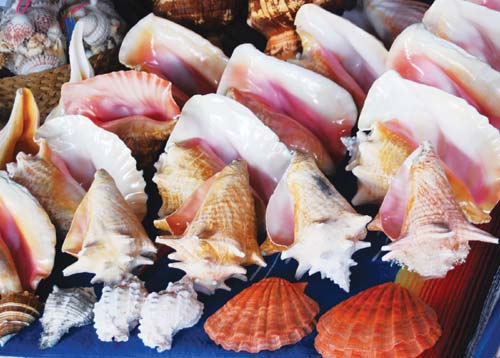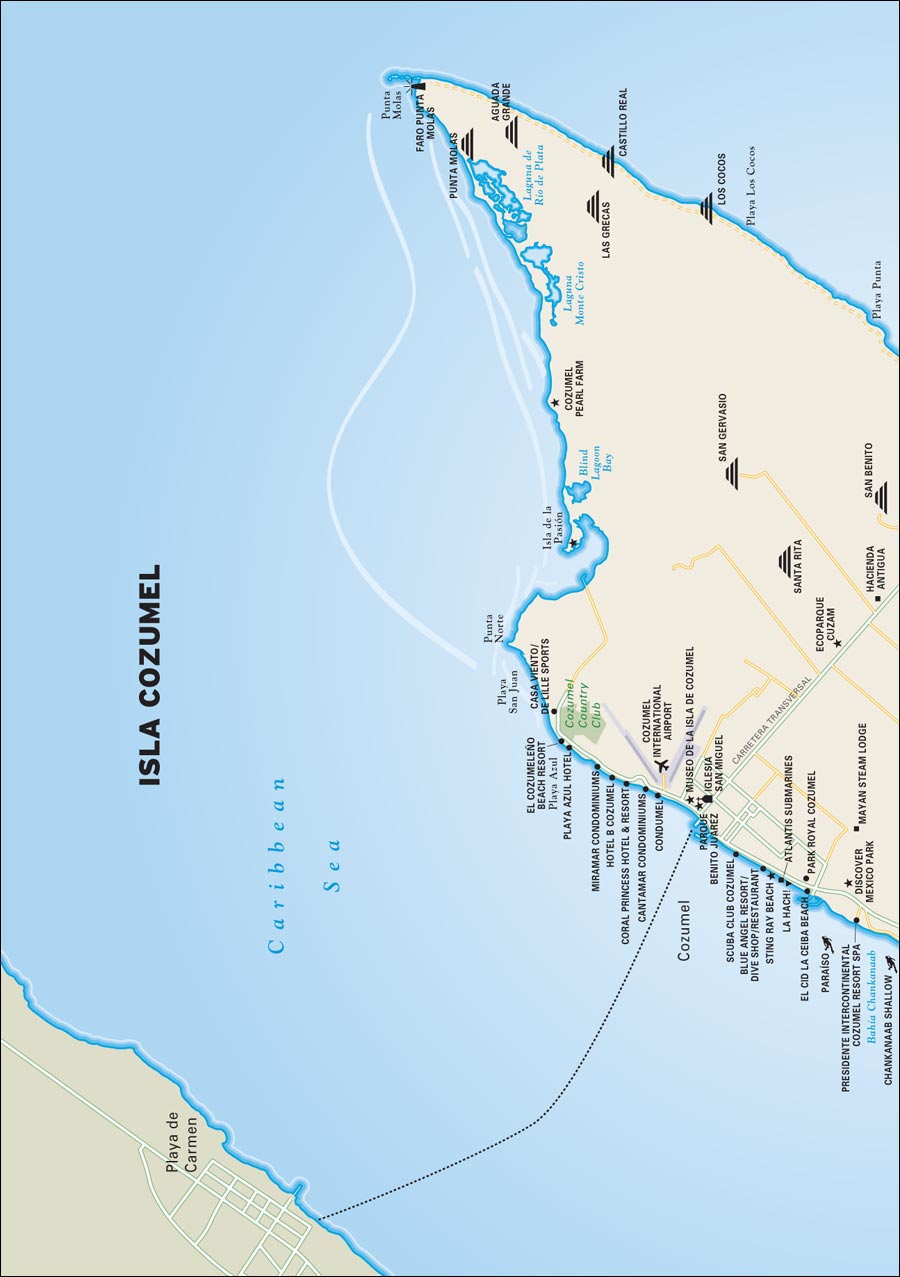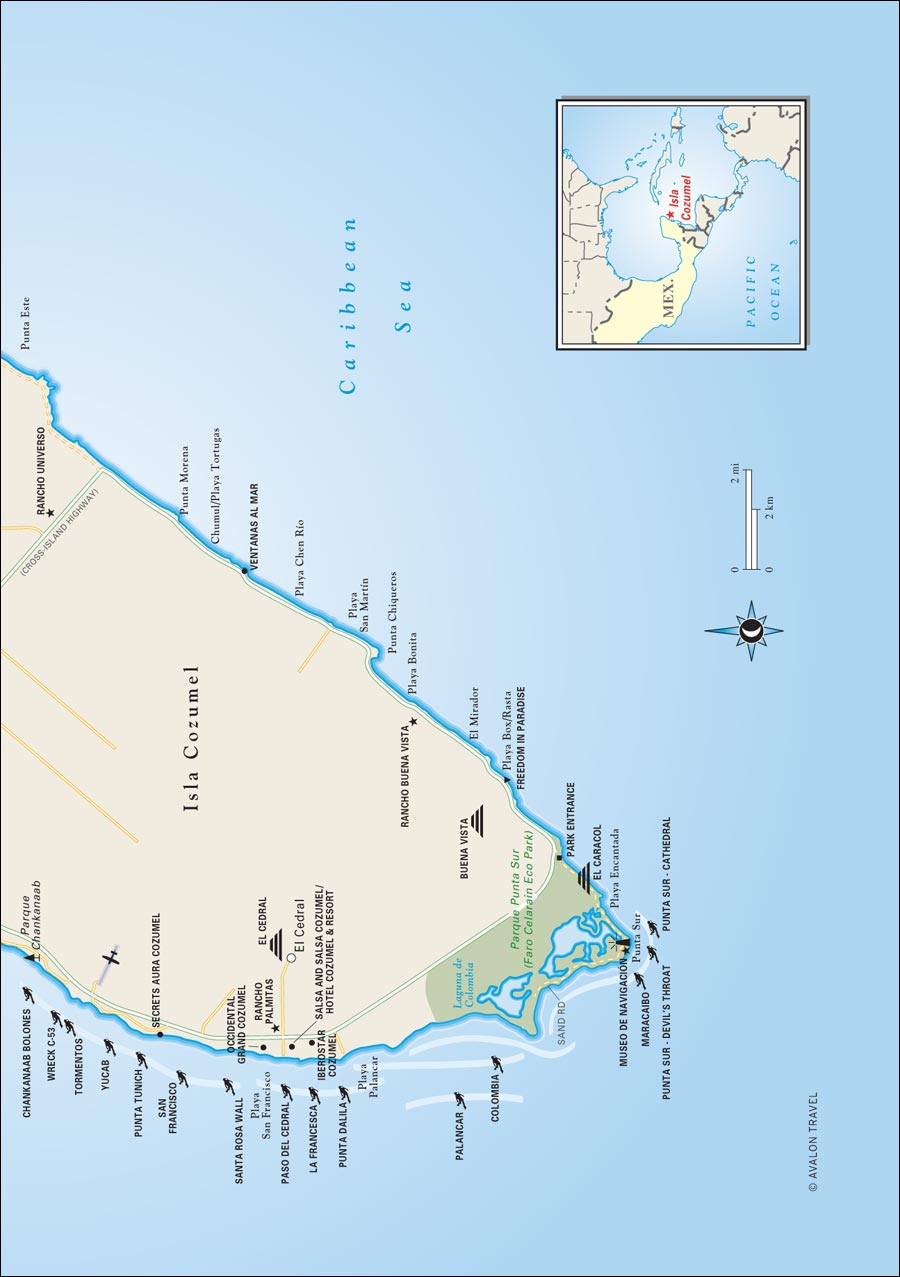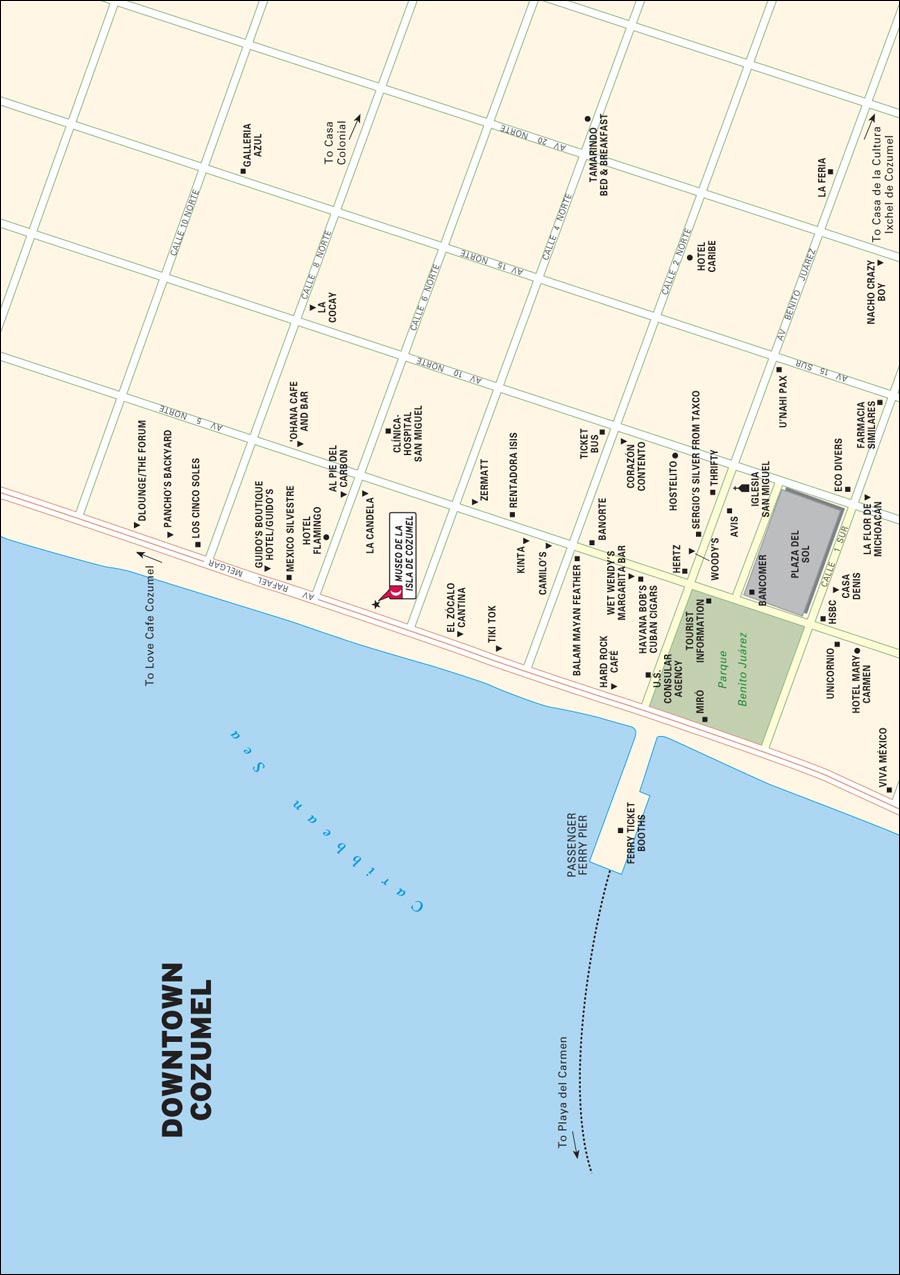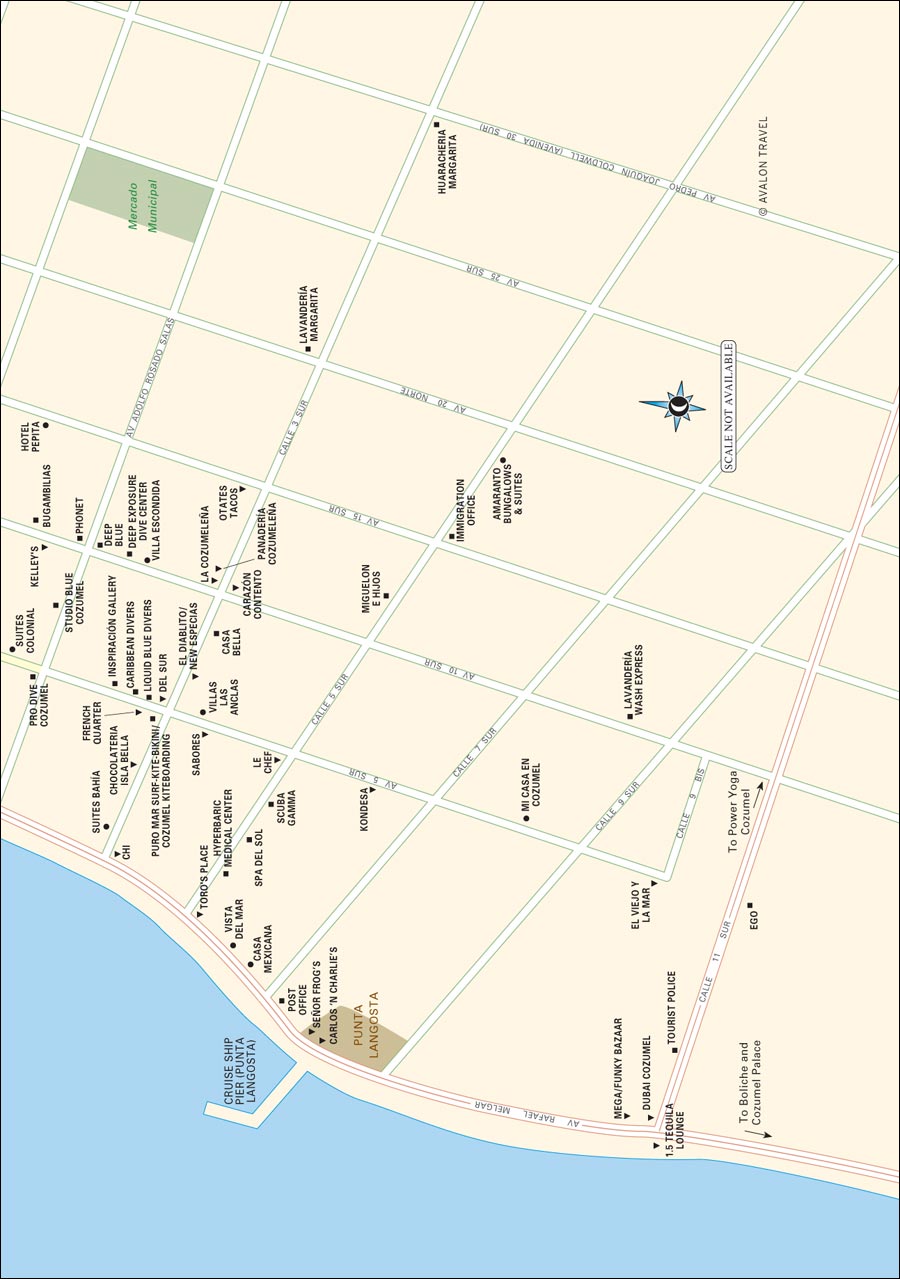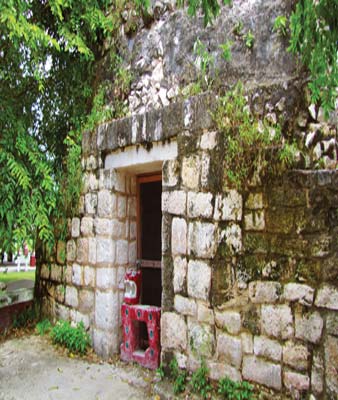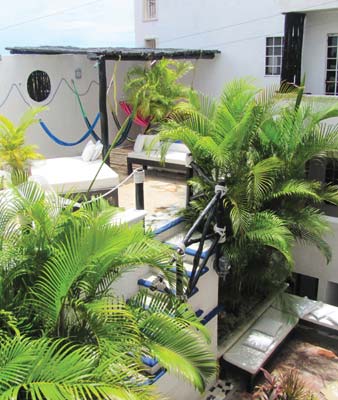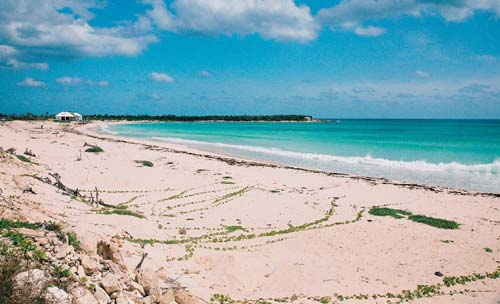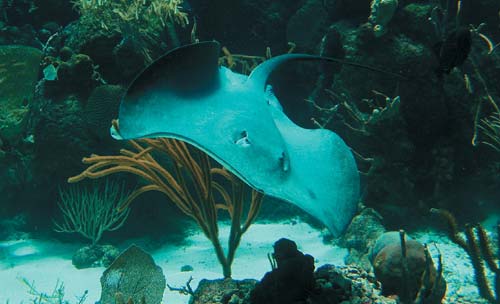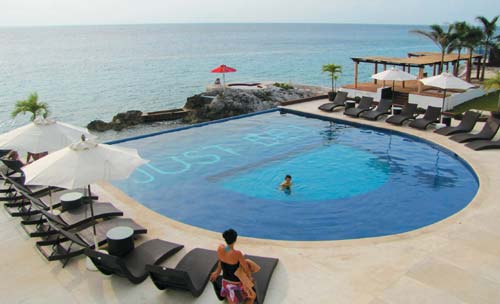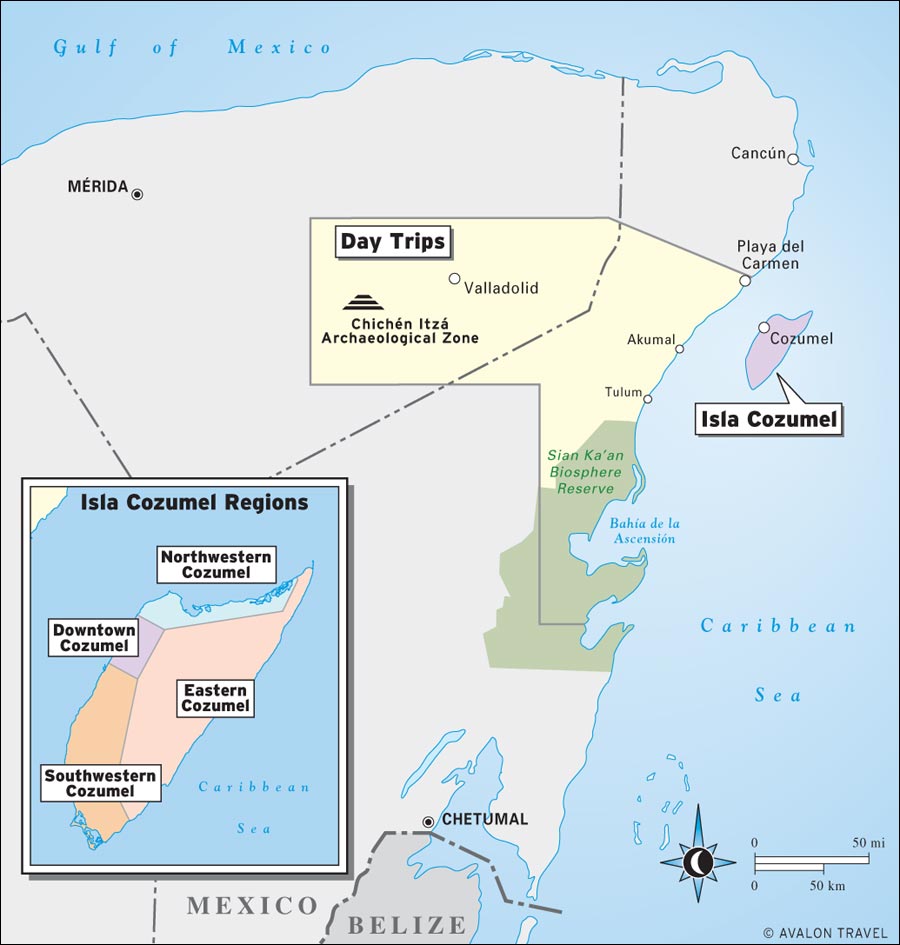 HANDBOOKS
HANDBOOKS
COZUMEL
Liza Prado & Gary Chandler
Discover
Cozumel
All around Isla Cozumel, the Caribbean Sea glitters a hundred shades of blue. To the west, across a channel thats 16 kilometers (10 miles) wide, is Mexicos famous Riviera Maya, with its spectacular beaches and all-inclusive resorts. To the east is the Caribbean Sea, with its blue-white waves rolling onto Cozumels shore. Cozumel itself is broad and flata limestone pancake whose one high point wouldnt clear a five-story building. More than 30 ancient Maya ruins are ensconced in the islands low dense forest, while beneath the dry green covering is a vast network of caves and caverns, the fifth-longest cave system in the world. Cozumels shoreline alternates between thick white sand, tangled mangrove forest, and long stretches of hard black stone.
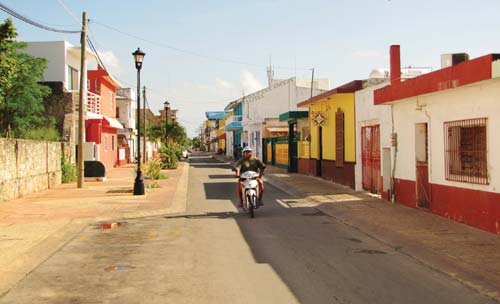
Of course, Cozumel is most famous for what is underwater. The Mesoamerican Reef, the worlds second-longest coral reef, stretches from the Yucatn Peninsula to the Bay Islands of Honduras. The reef is glorious, especially right in front of Cozumel, composed of over a dozen species of coral that sport every color imaginable. The reef supports many times that number of plants and sea creatures, from clown fish to spiny lobsters to sojourning sea turtles. Its no surprise that Cozumel is a diving and snorkeling paradise, not only for its rich coral and sealife, but also for the warm clear water and variety of underwater environments, including winding mazes, broad plateaus, and plunging walls.
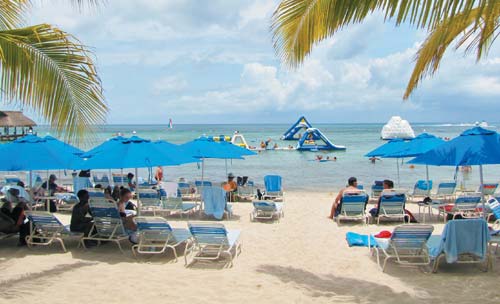
And Cozumel is no less interesting above water. San Miguel de Cozumel, the islands main town, is truly a tale of two cities: Cruise ships dock just south of town, their passengers forming a human river on San Miguels main drag, flowing slowly down a channel of jewelry stores, souvenir shops, and open-air restaurants. But just a few blocks inland from the promenade is an entirely different Cozumel: a small, friendly community where old folks sit at their windows and kids play soccer in the streets. The towns main plaza is a gathering place for the community, including on weekend evenings, when theres live music and dancing and street carts selling corn cobs on a stick.
Cozumels interior and far eastern shore are yet another world, lacking even power lines and telephone cables. Heavy surf makes most of the eastern shore dangerous for swimming, but you can easily spend a day beachcombing and relaxing on the unmanicured beaches and lunching at small restaurants overlooking the sea.
As one of Mexicos largest islands, it shouldnt be surprising to discover that Cozumel is so multifaceted. But its hard not to marvel at how stark the differences are. Come for the diving and snorkeling, but leave time to experience a side of Cozumel you may not have expected.
Isla Cozumel
Cozumels pristine coral reefs and crystalline water attract divers the world over; fewer people realize the island also has a scenic national park, numerous beach clubs, a tournament golf course, even an important Maya ruin. Travelers also can beat the cruise ship crowds by heading to the east sides isolated beaches and dramatic surf. Most people arrive by ferryits just a half-hour ride from Playa del Carmenbut theres also an airport with both domestic and international arrivals, and all of those cruise ships.
words of wisdom at the bottom of the pool at Hotel B Cozumel, on the islands northwest shore
DOWNTOWN COZUMEL
Downtown Cozumel doesnt have a beachfront, but it does have just about everything else: Its main drag, along the waterfront, is packed with pricey shops catering to the masses of cruise ship passengers who disembark a short distance south. Just inland are the colorful homes and simple shops typical of native Cozumeleos. Downtown is where ferries to and from Playa del Carmen dock, and its where youll find useful services like dive shops, grocery stores, laundry, Internet shops, medical centers, and more. Its got a variety of hotels, from hostels to dive resorts to upscale B&Bs, and restaurants for all tastes and budgets. Most of the islands nightlife is in the downtown area, and that, too, ranges from sports bars to discotheques to live music and dancing on the towns main plaza.
NORTHWESTERN COZUMEL
The northwestern shoulder of Cozumel is probably the most overlooked part of the island. Most visitors have their eyes on the shopping and restaurants downtown, and on the beach clubs dotting the southwest shore. Adventurous types head to the east side, leaving the northwest side quiet and crowd-free. (The exception is Isla de la Pasin, which is one of Cozumels more popular shore excursions for cruise ship passengers, but guests there merely zip through the northwest en route to the island.) Theres less sand on the northwestmost of this coastline is ironshorebut there are still a handful of



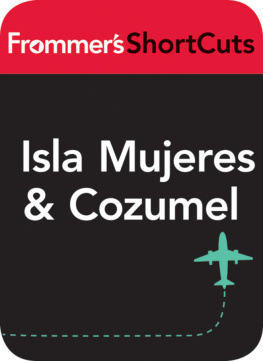
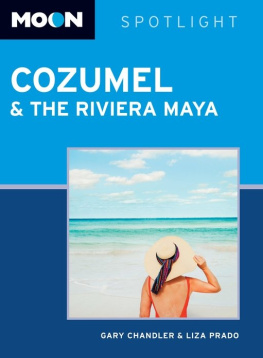
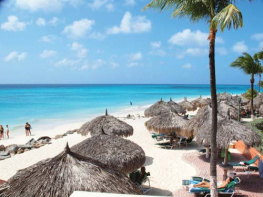
 HANDBOOKS
HANDBOOKS